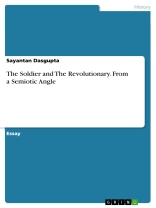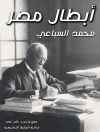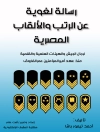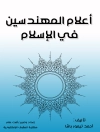Essay from the year 2017 in the subject History – Miscellaneous, University of Calcutta (Indian Statistical Institute), course: Masters, language: English, abstract: This essay is about using a semiotic angle to evaluate the existence and activities of a soldier and a revolutionary in a stratified manner.
The most common definitional difference between a soldier and a revolutionary is that a soldier is a person who serves in an army and obeys orders given to him by a government, and a revolutionary is someone who is involved in causing a complete or dramatic change in a society, country or in the international sphere. My concern, here, is the projection of a soldier who is a part of a national government and a revolutionary in both national and international sphere. The word ‘soldier’ is used, almost unanimously, in a positive sense. But the word ‘revolutionary’ is used in both positive and negative sense. The reason is, a soldier is always on the government’s side, whereas a revolutionary stands against the government. I am not here taking into account the notion of ‘government-in-exile’ as I am, here, dealing with a country’s electorally elected government, and a government-in-exile is also a revolutionary government or organization and it stands on the opposite side of an electorally elected government.
Sayantan Dasgupta
The Soldier and The Revolutionary. From a Semiotic Angle [PDF ebook]
The Soldier and The Revolutionary. From a Semiotic Angle [PDF ebook]
Mua cuốn sách điện tử này và nhận thêm 1 cuốn MIỄN PHÍ!
Ngôn ngữ Anh ● định dạng PDF ● ISBN 9783668450325 ● Kích thước tập tin 0.6 MB ● Nhà xuất bản GRIN Publishing ● Thành phố München ● Quốc gia DE ● Được phát hành 2017 ● Phiên bản 1 ● Có thể tải xuống 24 tháng ● Tiền tệ EUR ● TÔI 5084743 ● Sao chép bảo vệ không có












